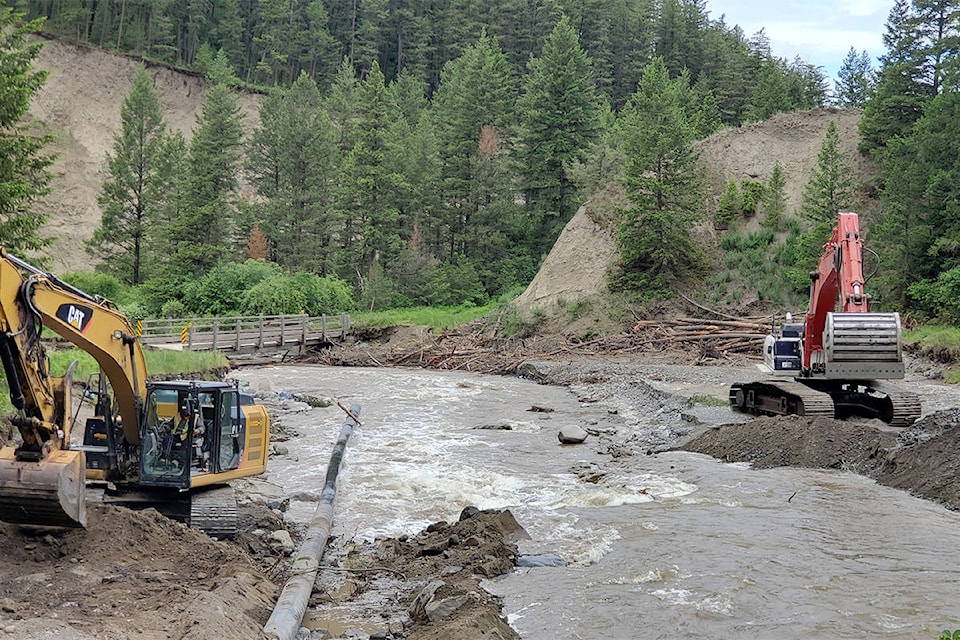Williams Lake has requested $7.5 million of emergency assistance funding from the province for flooding response work in the river valley completed to date.
“Right now we are dealing with the main issue and that is to make sure we can get the effluent from our lagoons to the Fraser River without any leaks,” said Gary Muraca, director of municipal services for the City during a tour Friday. “Until we can confirm that every piece of pipe is not vulnerable, we are still in the emergency response phase.”
Emergency responses can be funded 100 per cent by the provincial government, but once the City moves to the recovery phase the City will have to pay 20 per cent, he added.
Repair and installation of the discharge pipe should be completed next week which will ensure the treated effluent is only discharged into the Fraser River.
Read more: Williams Lake river valley remains closed to public, flooding repairs continue
At the peak of the flooding, Williams Lake Creek was flowing at a rate of 55 cubic metres per second — it is now flowing at about 15 cubic metres per second.
If it drops below nine cubic metres per second then that is not swift enough for proper dilution of the treated effluent.
The water continues to be sampled for monitoring about four times a week, Muraca confirmed.
Roads are being widened or rerouted and temporary bridges installed.
So far the work has extended almost as far as the area known as the ‘ash tray’ about three kilometres before Williams Lake Creek enters the Fraser River.
There are about eight bridges on that last stretch of the road and Muraca said for the most part they will all have to be redone.
“Most of the road is intact and we hope that there’s not a bunch of road work to be done.”
Peterson Contracting Ltd. and Lake Excavating Ltd. are both on site at different sections of the valley. Markers are up every half a kilometre for drivers to radio from as rock trucks, heavy equipment and pick up trucks are all using the 17.5 km road which stretches from the Tolko yard, across the side of the mountain, down the Moore Mountain Road and into the river valley.
Adjacent to heavy duty temporary bridges that can withstand the weight of large trucks and equipment there are new pullouts where permanent bridges will be installed.
“At some point those temporary bridges will come out and our rail car bridges will go back in,” Muraca said.
In some cases, the road will be moved to the north side of the creek to avoid it washing out again in the future, while in other areas, the road has been cut to a lower level than it was before the flooding.
“We are making our breaches with the stream as minimal as possible and have been working with Fisheries and Oceans. We don’t like to go into the streams but there are occasions where we have to get into the streams to do our work to protect the pipe and temporary work.”
Mayor Walt Cobb told people who attended a tailgate talk event Thursday at the Tourism Discovery Centre the river valley will not be open to the public this summer, which Muraca confirmed.
Additionally, eleven Frizzi Road industrial properties above the river valley escarpment remain under evacuation order.
As a result of a geotechnical assessment, Muraca said property owners within the area have been instructed to they cannot have anything within 50 metres of the edge of the embankment.
One large white building on one of the properties has been condemned, he added.
Read more: VIDEO: Aerial tour of flooding in Williams Lake area
news@wltribune.com
Like us on Facebook and follow us on Twitter
